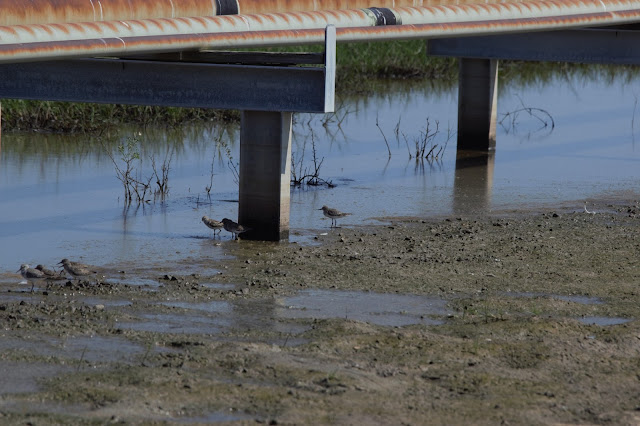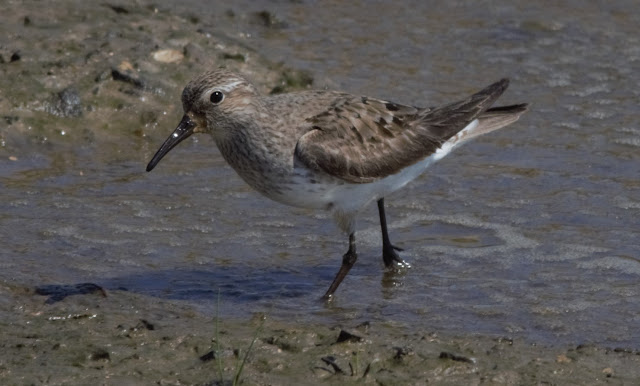As we drove down the road, we noticed shorebirds huddled in the shelter of oilfield pipes that run along the road. The day was hotter than we'd expected, and the birds seemed as tired of the blazing sun as we were. One bird was off to the side a little, separated from its flockmates by a post. From the distance, we noticed that its wings looked long for its body, so we started taking pictures.
This is a pretty good time of year for Baird's Sandpiper, and the habitat looked decent, so we'd had our eyes out for that species.
However, through the binos, the bird looked gray. "Color's not right," we decided. Maybe it was a White-rumped Sandpiper? That would be downright rare, as White-rumps migrate far to the east of Louisiana on their way south in fall migration, so it was an exciting idea. The bird was hard to compare to the birds on the other side of the post, so comparing sizes wasn't as easy as it looks in the picture above.
The birds were much more cooperative than we'd predicted, and as we got tolerably close the look of the bird wasn't right for either Baird's or White-rumped. We realized that our potential Baird's Sandpiper-turned-potential-White-rumped Sandpiper was way too small for either and was just a Western Sandpiper with molting wings that presented the illusion of being longer than the tail. Oh well. The bird did offer us great photo chances, which was nice.
As we were photographing this bird, we noticed another flock just down the road. Scanning them with binoculars, wenoticed that there actually was a long-winged bird in that flock. Voila! We'd get our Baird's Sandpiper after all.
The distant flock began moving toward us, so we waited for the photo opportunity to arrive. As the bird neared us, its color started to become more evident through the viewfinders. I sneaked a look at the image on my camera and noticed a gray face with a white supercilium. Ahhhh...White-rumped Sandpiper.
Just to be sure, we flushed the flock and noticed that one bird flashed a white rump in flight.



